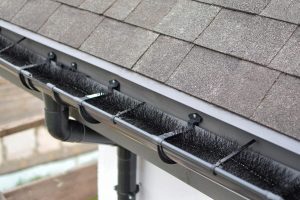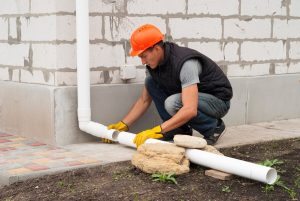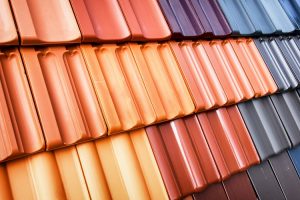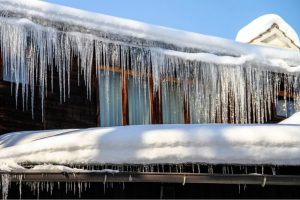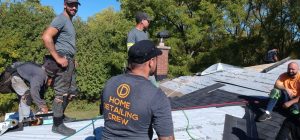What Is the Best Exterior Siding on a House for Winter in Canada
Sep 29, 2023

The extreme weather conditions in Canada sometimes make it challenging to choose ideal building materials. Suitable materials have to withstand the harsh natural elements experienced during winter and summer, which means not being susceptible to damage by excess cold, precipitation, humidity, and heat. The search often causes homeowners to wonder about all home improvement materials and what type of siding is best for cold climates.
The siding is usually the first point of contact between the house and natural elements. The stronger it is, the better the protection the house gets from high winds and rainwater. Getting the most weather resisting siding is paramount to ensuring the house’s structural integrity remains intact for longer. Debris, ice dams from the roof, hailstorms, and ice cannot cause any damage.
Similarly, having low-quality siding that can crack and break under exposure to such elements leaves the house vulnerable to destruction. You either invest in the best sidings for cold climates or deal with frequent siding repairs after every freezing and thawing cycle.
Knowing which siding becomes brittle in cold weather can eliminate confusion when searching for the best ones. However, you must also factor in other weather elements, especially in Canada. Each changing season has extreme weather that can be detrimental. For instance, you cannot buy cold-resistant siding that does not withstand high temperatures in summer.
Siding Buying Guide to Make the Process Easier
One of the best ways of improving a home is by replacing the siding, especially when you plan to sell. The siding increases the property value by offering optimal protection from outside elements. It also improves the aesthetic appeal of the house. That is why it is a bad idea to leave cracked or broken siding unrepaired for long.
How do you know which type of siding is best?
At D’Angelo & Sons, we understand the pros and cons of various types of siding and their performance levels. Some can withstand cold temperatures, while others work best in hot weather. We know those that can fade due to exposure to UV rays and siding that can break after one windstorm.
The information below can help you make an informed decision when searching for the best type of house siding from the available options such as wood, vinyl, fibre cement, and plastic.
What You Should Know About Siding Before Purchasing It
You can use siding material and get wood grains or finishes. Examples are vinyl and plastic siding. They are cheaper than natural wood, but some of their profiles have been designed to look like natural wood.
Vinyl Siding
Most people are familiar with vinyl siding because it is one of the cheapest options available. It is also one of the materials that can withstand the weather elements and does not require frequent maintenance. Washing it with a hose is usually enough to get rid of the dirt.
The vinyl siding installation process is straightforward and can be handled without professional labour. The siding is also available in multiple colours and can look great even without painting. The sturdiness of vinyl and its ability to resist moisture damage makes it an appealing material in Canada. It is likely to maintain its original colour and does not provide a conducive environment for mould growth.
All the benefits of vinyl siding types depend on the installation method. If not done correctly, the siding can buckle or warp. Its ability to withstand impact can also reduce with time, making it less durable than the other siding types.
What is the average price of vinyl siding?
Although it is cheaper, the overall vinyl siding prices depend on several factors, such as design and quality. For instance, woodgrain vinyl costs approximately $2 per sq. ft., while Georgia Pacific Dutch Lap Vinyl costs around $1 per square foot. You may buy Hampton Red Siding at $1.4 per sq. ft. and Cellwood Evolutions 4.5-inch Dutch Lap at $ 0.75 per square foot. Most vendors also sell Durabilit Blue Ridge Dutch Lap at approximately $2.7.
So, what is vinyl siding?
It is a siding material made from engineered PVC or plastic. Its advantages, such as fade-resistance, simple installation, and easy maintenance, make it better than most materials available in the market. However, consider disadvantages such as susceptibility to wind damage, inability to resist moisture fully, and susceptibility to denting or cracking under harsh weather before purchasing.
Brick Siding
Every brick siding house has a traditional appeal with enhanced durability. The material also has a better visual appeal than other siding types. Occasional cleaning with a garden hose is usually enough to maintain the siding, and correct installation can increase its lifespan and that of the property. However, brick is also more expensive than most of the other sidings. Its ability to withstand the extreme weather conditions in Canada makes it a valuable and better siding material.
It is important to note that brick is only water-resistant, not waterproof. However, it does not weaken when exposed to a lot of moisture. It can remain reliable throughout the seasons and is very durable. Nevertheless, when exposed to saltwater for a long time, it can rust. Therefore, using it on properties along the coastline is not advisable.
Is brick siding expensive? Yes. Apart from the high purchase cost, the labour charges for brick siding installation are also higher. The approximate buying price ranges between $7.5 and $15 per square foot, while the labour costs are approximately $6.30 to $11 per sq. ft. As such, you may spend approximately between $14.70 and $31 per sq. ft. when you choose to invest in brick siding. The benefits of brick are more than those provided by any other siding material. That makes their high price worth it.
Advantages include a sophisticated look that is hard to match and a longer lifespan. The natural beauty of brick siding can transform any home exterior into an eye-catching one, and the material strength ensures it lasts longer. Resistance to insect infestation, fire resistance, imperviousness to weather, and low maintenance are other advantages you get from the siding. But, of course, you can also paint it to get a different look.
What are the disadvantages of brick siding? The complicated installation process and potential problems that can arise from trapped moisture are cons worth considering. However, they are avoidable if you hire professionals who know how to install brick siding on the house.
Aluminum Siding
Aluminum siding has been around for a long time and is often compared to vinyl. However, the main point of focus in the difference between aluminum siding vs vinyl is easy dentation. Aluminum has better visual appeal, but unlike vinyl, it can dint from physical impact. That is why most contractors prefer to place it on the second storeys only.
Aluminum siding styles are also better at withstanding weather elements, making them perfect for the Canadian weather. The materials are not vulnerable to moisture issues and can last longer even when exposed to dampness regularly. They are also better at retaining energy and can reduce the energy consumption rate in any home, especially during winter. The siding styles are also available in many colours and can maintain their original hue for longer. Repainting is also an option for those who want to customize.
What is the price for aluminum siding? The price range differs from the aluminum material chosen. For example, Sell-Even 8-inch Aluminum Horizontal Textured Hollowback and Sell-Even Double 4-inch Aluminum Horizontal Textured Hollowback cost around $1.99 per sq. ft. In comparison, Sell-Even Double 4” Aluminum Horizontal Textured Foamback and Sell-Even 8” Aluminum Horizontal Textured Foamback cost approximately $2.49 per square foot.
Is aluminum siding discontinued?
Although aluminum siding is still available, it is not as popular as before. Vinyl replaced it in the 1970s, and it has continued to be a favourite among many homeowners. The availability of other siding materials has also led to the decreased use of aluminum. Even so, the material still possesses advantages such as the ability to withstand salt, excess moisture, easy installation, corrosion resistance, and better insulation. Some of its demerits include easy disfiguration, a lot of noise levels, and less visual appeal.
Wood Siding
The natural elegance of wood remains one of its advantages as a siding material. The classic appearance never gets old on any property, regardless of how long it remains in place. The wood material used on siding comes in various designs and shades. Some may be vertical, while others horizontal. Examples are wood shakes, which are installed in an overlapping manner horizontally, and clapboard that can be arranged in varying lengths. Although they have an unmatched aesthetic appeal, the exterior wood siding types have a downside – distributors do not treat them, leaving the task to users. That means you have to seal them before installation to prevent premature damage. Without an appropriate finishing, they become susceptible to insect infestation and rotting. On the other hand, specific types like redwood and cedar can last long with priming.
Wood siding requires more maintenance than the other siding material types. Without the protective measures, the siding becomes susceptible to cracking, splitting, cupping, or rotting. Additionally, different types of wood are suitable for specific weather conditions. Therefore, consider the local climatic changes when choosing wood siding material.
When it comes to what are the disadvantages of wood siding? Inability to handle moisture is the main focus. However, priming and sealing often prevent water from reaching behind the siding. It requires expertise and costs extra money to install, but that is better than dealing with regular siding repairs arising from moisture damage.
Is wood siding expensive?
Yes. The cost of purchasing wood siding is higher than other siding materials, and the extra maintenance required adds to the overall cost. The specific prices differ according to the type of wood you prefer. Other factors that may affect cost are the location and timing. Some species of wood may be cheaper than others in some years. The average price of cedar ranges from $50 to $78 per 25 square feet, and plywood is approximately $1 per square foot.
What wood is best for siding?
The best wood for siding will depend on your location and the kind of weather experienced there. Some examples to consider are cedar, redwood, fir, pine, and spruce. All the options bring several advantages, such as easier replacement of damaged shingles, environment friendliness, possible customization through staining or painting, and unbeatable visual appeal. However, they also have potential disadvantages like warping, insect infestation, rotting, and cracking if not protected before installation and maintained regularly. Mandatory resealing after every five years can also be expensive.
Wood Fiber Siding
Composite wood is sometimes combined with fibres and glue, among other components, to form wood fibre siding. It has the same texture as natural wood. The siding type is also cheaper than natural wood and is easier to use. In addition, its ability to withstand the natural conditions outside makes it a valuable addition to any home in Canada. Personalization through painting is also possible.
All the benefits of wood fibre siding can be alluring, but failing to seal the ends properly can damage them. The excess moisture can accumulate on the joints, causing the material to swell. Therefore, the material is not suitable for areas with high precipitation. They can last during winter, but maintenance procedures before and after the season are mandatory. Once they get damaged, the repair is too expensive. The best option is prevention.
The installation process does not require the expertise of professionals. However, you may still spend approximately $3000 and $5000 on the installation. The quality of wood fibre plays a role in the pricing. For example, SmartSide 76 Series Beige Engineered Treated Wood can cost $11.44 for 1600 square feet, whereas SmartSide 38 Series Beige Engineered Treated Wood costs $27.48 for 1440 square feet.
Being cost-effective is one of the advantages of wood fibre siding. Additional benefits are its authentic wood appearance, customization options, strength and durability, and eco-friendliness. The main problem is its ability to trap moisture and cause water-related issues.
Fiber Cement Siding
Fibre cement can look like wood or brick siding. Its moulding and installation processes are similar to wood fibre, but how long does fibre cement siding last? Most fibre cement manufacturers give warranties that last up to 30 years, but the material can remain in good condition for longer than that. It consists of cement, making it more solid, resistant to fire, and warping. Its ability to diffuse and reflect heat, inability to twist and rot also add to the advantages. It can keep the house warmer in winter and colder in summer. Cement fibre can also withstand fluctuating temperatures and can maintain its visual appeal for longer. In addition, paint does not peel or fade quickly when applied to the siding.
Like every other material, you should compare the fibre cement siding pros and cons before buying. One con to remember is that the installation process is complicated and takes longer. That adds to the labour charges and the general costs. Replacement is also challenging because of its heavy nature.
Is fibre cement siding expensive? Initially, the material was more expensive, but the costs have reduced significantly over the years. You can now purchase a 5/16-inch x 48-inch x 96-inch siding for approximately $34. In addition to the lower fibre cement siding cost, the material also offers several merits such as:
- It is non-flammable.
- Resistance to insect infestation and decay.
- Longer lifespan.
- Enhanced aesthetic appeal.
- Resistance to weather changes.
- Easy paint attachment
Fibre cement siding installation requires professional experience. If not done correctly, issues are bound to arise, leading to expensive repairs and possible replacements.
How to Measure for Siding
Estimating the number of siding materials that can fit your home is the first step before installation. That leads to the question, how do you figure how much siding you need?
One option is consulting your siding installer. Our experience with various types of the siding helps us give correct estimations to our clients. We do not overcharge for our expertise either.
The other alternative is doing the estimation yourself. Start by getting the home area. Mark the rectangular sections of the house and get their length and width dimensions. Next, locate triangular sections and compute their dimensions too. Add all the figures to get the total, then divide that number by 100. It gives a more accurate value because siding material distributors measure them by the square for an area of 100 sq. ft.
How To Find Quality Siding Contractors for the Siding Installation
The longevity of siding depends on the quality of installation. That is why hiring professionals is crucial. In some cases, the siding installers in your area may recommend that you place the new siding on top of the old one if it is still in good shape. Remove any damaged siding and have the wall behind inspected thoroughly to avoid recurrent problems. Covering damaged walls or siding can result in costly repairs.
After removing the old siding, apply a moisture-resistant layer on the wall before placing the new material. New flashing around the doors and windows is also a good idea. There should also be some space between the fastener heads and panel to leave room for expansion and contraction.
Reach us for our siding services or consultation today.
Use These Tips to Make Your Siding Last
So, how long does exterior siding last? The trick to making siding last is maintaining it regularly and repairing damaged sections as soon as possible. Some of the maintenance measures include:
Caulking: You can apply caulk on all the corner and butt joints to preserve all types of wood siding and cement fibre material. Doing the same on all windows and doors can also protect the house from moisture damage. Without maintenance, water can seep into the interior wall fixtures. It can cause extensive damage that becomes too expensive to repair.
Inspection: Regular inspection can prevent damage from happening. Look for stains and other signs of water damage, especially under the eaves.
Insulation: Siding problems can worsen during winter because of ice dams, but proper insulation and sealing can prevent them. Covering all the gaps and enhancing insulation can also reduce energy consumption in the house.
Urgent repairs: Fixing damages as soon as they appear can save you a lot of money in the long term and prolong the lifespan of the siding.
